Results 4,931 to 4,940 of 12094
Thread: Anandtech News
-
04-23-15, 06:02 PM #4931
Anandtech: NVIDIA’s SHIELD Console Becomes SHIELD Android TV
NVIDIA updated their SHIELD website today with a bit more information on the SHIELD Console. And while an earlier $299 device listing ended up being erroneous – NVIDIA accidentally listed the developer edition console for a time – there is one other minor update that is true and bears mentioning.
With today’s site update, NVIDIA has updated the name of the SHIELD Console. All of their branding now refers to the device as the SHIELD Android TV, doing away with the “Console” branding. The original SHIELD Console name has been somewhat inconsistent on NVIDIA’s part – the company would call it the Console at times, and other times simply the NVIDIA SHIELD – so this slight rebranding is presumably NVIDIA settling on what should be the device’s final name for next month’s launch.
More...
-
04-23-15, 07:31 PM #4932
Anandtech: Microsoft Health and Band Updates Bring New Cycling App Integrations, Insi
Today Microsoft launched a new update to their fitness wearable, Microsoft Band, and also to their health platform and smartphone app, Microsoft Health. These updates broaden the capabilities of features of each by integrating with third party apps and services, implementing new health insights (analysis), and enhancing the Microsoft Health app to now work stand-alone without a paired Microsoft Band.
The new update enhances the bike activity tile added in Feburary to now integrate with activity tracking apps Strava and MapMyRide. After this update is installed, the Strava and MapMyRide apps can harvest activity data from the Microsoft Band. Microsoft does not state if this data harvesting is continuous or a one time download after an activity is complete. Personally, I believe Strava integration is a huge boon to the Microsoft Band. In my experience, many members of the cycling community use Strava and cylcing computers to track their rides. My brother, an avid cyclist, has mentioned interest in the Microsoft Band, but without Strava integration he continued to rely on a cycling computer and a chest mounted heart rate monitor.
Microsoft's cloud analytics platform, Microsoft Health, has also been updated to provide new "Insights" into the body and health of an individual. These new insights are available via the web dashboard starting April 27th and are listed below:
- Comparative Insights: Measures data such as daily steps, sleep, workout frequency and calorie burn and compares it to similar Microsoft Health customers based on body type (height and weight). Customers looking for motivation can use comparative insights as a benchmark to understand their health relative to similar people.
- Sleep Recovery: Good sleep is the foundation of health, and something everybody does and needs. Microsoft Band tracks the length and quality of sleep. Use the Microsoft Health web dashboard to analyze sleep restoration, sleep efficiency, and wake-ups, to find out how well the body restores its resources during sleep.
- Fitness Benefit: Track fitness progress using historical data to measure improvement over time.
- VO2 Max: VO2 max refers to the maximum volume of oxygen used during exercise, and is the primary indicator of cardiovascular fitness. Traditionally, measuring VO2 Max is cumbersome. Not anymore. Microsoft Band estimates VO2 max based on heart rate information. Now customers can track how their VO2 max increases as they improve fitness level and achieve their wellness goals, simply.
- Run/Exercise Observations: Get more out of run and workout data with in-depth observations and insights. With a week of data, customers can determine which day of the week and at what time of day they perform best. Using historical data from as far back as five weeks, customers can track whether they’re maintaining, progressing, or need to re-dedicate themselves. Analyze detailed stats to find specific aspects of runs and workouts that can be improved.
Particularly interesting is the VO2 Max calculation. This analysis is traditionally performed by specialized equipment, typically as a paid service at a gym. Microsoft has always stated their cloud platform will provide innovative analysis, and if this Insight is close to the traditional VO2 Max measurement, then Microsoft has delivered. Additionally, I personally appreciate the historical and comparative analysis as it provides a great motivational tool.
Finally, Microsoft will update the Microsoft Health smartphone app on all platforms in the coming weeks to provide activity measurements directly, without use of a Microsoft Band. On the surface this is a surprising development, as it is in Microsoft's best interest to sell hardware. However, upon further thought this makes sense. Microsoft can provide a limited set of analysis using the smartphone sensors, engage the user into Microsoft Health services and offer the Microsoft Band as an up sell for more complete activity tracking. Device support is limited to smartphones with a dedicated microcontroller co-processor for sensor data, which is most modern devices.
- iOS: iPhone 5s and later
- Android: Android 4.4+ with support for Step Counter API
- Windows Phone: Lumia devices with Sensor Core V1+ and Cyan Firmware
Some of these updates are available today, such as the biking app integration, while others will roll out over the next few weeks.
More...
-
04-24-15, 07:31 AM #4933
Anandtech: The Andyson Platinum R 1200W PSU Review
Back in the mid 2000s, a PSU company called Hiper used Andyson as its OEM. It has been a long while, mainly because Hiper shut down, that we have seen a high performance unit from Andyson hit the market. However now the PSU OEM is back with their own retail series and it seems like that they mean business with today's 1200W Platinum unit.
More...
-
04-24-15, 01:31 PM #4934
Anandtech: Microsoft Releases FY 2015 Q3 Financial Results
Yesterday (apologies for the delay I was in travel status when the results came out) Microsoft announced their Q3 results for fiscal year 2015, and revenue was up 6% year-over-year, coming in at $21.7 billion for this quarter. Gross margin for the quarter was $14.6 billion, or 67%. Operating income for the quarter was $6.6 billion, down 5% year-over-year, and earnings per share (EPS) was $0.61, down from $0.66 in Q3 2014.
Normally Microsoft does not release Non-GAAP measures, but due to the strengthening of the US Dollar over the last year, Microsoft’s earnings were actually weaker than as compared to last year’s exchange rate, so they have provided a comparison to take that into effect. None of the numbers can be used as actual results, but are somewhat interesting to see just how much a global company based in the USA can be impacted negatively by a gain in their home currency. On revenue, the constant currency impact was $534 million, so the year-over-year gain would go from 6% to 9%. Gross margin had a $396 million impact, meaning the comparison to Q3 2014 would show a 4% gain rather than the 1% reported. Operating income was less impacted (my guess is that most of their expenses like salary are in the USA) but there was still an $87 million hit, and EPS took a $0.02 hit based on currency alone.Microsoft Q3 2015 Financial Results (GAAP) Q3'2015 Q2'2015 Q3'2014 Revenue (in Billions USD) $21.729 $26.470 $20.403 Operating Income (in Billions USD) $6.594 $7.776 $6.974 Gross Margin (in Billions USD) $14.568 $16.334 $14.425 Margins 67% 61.7% 70.7% Basic Earnings per Share (in USD) $0.61 $0.71 $0.68
Some of the loss in operating income was due to the “restructuring” charges of $190 million in relation to the workforce cuts announced last year. This caused a $0.01 hit on earnings per share this quarter. There was also $7.5 billion returned to shareholders this quarter, up 83% over Q3 2014, and consisted of $5 billion in share repurchases and $2.5 billion in dividends. The next dividend payment will be $0.31 per share, payable to shareholders of record as of May 21st and to be paid out on June 11th.
Looking at the individual segments, Microsoft breaks their major divisions down to “Devices and Consumer” and “Commercial” and each segment is further broken down into different segments. These have evolved a bit over time as new products are added to the mix. Devices and Consumer is broken down into Licensing, Computing and Gaming Hardware, Phone Hardware, and Other. Commercial is Licensing and Other. Other includes the cloud computing revenue, so despite the odd name, it is fairly important to Microsoft’s future directions.
On the Devices and Consumer side, Licensing declined 24% year-over-year, with total revenue of $3.48 billion, and gross margin of $3.21 billion. Windows OEM revenue declined 22%, with Pro declining 19% and the Pro licensing returning to pre-Windows XP retirement levels. For those that do not follow this closely, Microsoft (and as a result most PC OEMs) had a surge in sales over the last year due to the end-of-life of XP. Businesses were upgrading at a strong rate which helped sales. Office Consumer revenue declined 41%. This is actually fairly normal, since the company is trying to drive people to Office 365, and the transition to Office 365 contributed to 27 points of the decline, with the remainder being attributed to a weakness in the Japanese PC market where Office has traditionally had a high attach rate. Windows Phone licensing revenue declined 16% due to a higher mix of low royalty devices. I am not sure what Windows Phone licensing entails anymore though since the OS itself was made free to use last year.
Computing and Gaming Hardware had a 4% drop in revenue, coming in at $1.8 billion. Gross margin was $410 million for this segment, which is up 60% (or 92% based on constant currency) and was driven primarily by Surface sales. For the quarter, Surface amounted to $713 million in revenue, which is up 44%, and the Surface 3 was announced which will not be on sale until Q4 (next month) and it opens up Surface with x86 up to different price points. Xbox revenue dropped 24%, and Microsoft has not been able to keep up the post launch numbers from last year. Surface Pro 3 drove the margin improvements.
On the Phone Hardware front, Microsoft sold 8.6 million Lumia smartphones this quarter, which is 18% more than Q3 2014. The Nokia acquisition included the feature phones as well, and Microsoft sold 24.7 million feature phones last quarter which is a market that continues to contract. Revenue for this segment was $1.4 billion, but gross margin was a $61 million loss which is attributed to the currency exchange rates.
Other, which includes online advertising, first party games, and Office 365 Consumer, had a 25% increase in revenue compared to Q3 2014, coming in at $2.2 billion. Gross margin was up 45% to $570 million. Online advertising revenue was up 21% due to higher search volume and revenue per search, and Bing market share in the USA is 20.1%, up 150 basis points. Office 365 Consumer continues its strong gains, with a sequential growth of 35%. Office 365 Consumer now has 12.4 million subscribers. First-Party Games revenue is up 49% driven by Minecraft, which Microsoft acquired last year.
On the Commercial segment, revenue was up 5% to $12.8 billion, and gross margin was up 5% to $10.42 billion. The Licensing segment had a revenue decrease of 3%, driven by Office Commercial revenue declining 16%. Windows volume licensing revenue declined 2%, and Server products had a revenue gain of 10%. The Other segment had a revenue gain of 45%, and Commercial Cloud saw another big gain, with revenue growing 106% and Cloud now has an annualized revenue of $6.3 billion. Customer use of Azure more than doubled in the last year. Microsoft has done a good job moving their services to the cloud, and many of their customers are choosing this route. Two out of three new Dynamics CRM customers have went with cloud deployment of the service.Microsoft Q3 2015 Segment Overview (in Billions USD) Q3'2015 Q2'2015 Q3'2014 D&C Licensing Revenue $3.48 $4.17 $4.60 D&C Licensing Gross Margin $3.21 $3.88 $4.02 D&C Computing and Gaming Hardware Revenue $1.80 $4.00 $1.87 D&C Computing and Gaming Hardware Gross Margin $0.41 $0.46 $0.26 Phone Hardware Revenue $1.40 $2.28 N/A Phone Hardware Gross Margin -$0.061 $0.33 N/A D&C Other Revenue $2.28 $2.44 $1.82 D&C Other Gross Margin $0.57 $0.55 $0.39 Commercial Revenue $12.80 $13.27 $12.24 Commercial Gross Margin $10.42 $10.83 $9.91
Windows, the once dominant factor in Microsoft’s earnings, continues its decline, but Office has done well to transition to the cloud. Windows Phone is at yet another crossroads, and while sales did increase for the Lumia handsets, they still lag other smartphones by a wide margin. The commercial segments have continued to bring in very high margins, and help offset consumer.
Source: Microsoft Investor Relations
More...
-
04-24-15, 02:30 PM #4935
Anandtech: G.Skill Announces 16GB Unbuffered Modules: 128GB Kit at DDR4-2800
One of the more important announcements this year in the world of DRAM has been the march towards 16GB un-buffered modules. We saw last year Intelligent Memory launch some for DDR3, but due to other issues they only worked out-of-the-box on AMD and Atom platforms and were not widely available. At CES we saw Corsair place an interesting image on one of their displays, indicating that DDR4 modules at 16GB a piece were coming. Today, G.Skill formalises this with the announcement of a 128GB memory kit for X99.
G.Skill has worked with Samsung in order to produce modules rated for DDR4-2800 at 16-16-16. These 8Gb ICs are produced at 20nm, and while the average user has little need for 128GB, X99 is aimed more at the prosumer market which can have exorbitant memory requirements – previously the only way to hit 128GB on a single socket was with RDIMMs and Xeon processors which have a substantial cost.
At this point in time, G.Skill is showing that DDR4-2800 with 128GB works with the ASUS X99 Rampage V Extreme, although the XMP profile should allow use on other motherboards. Personally I would suggest that X99 users ensure they have the latest BIOS update before installing these modules, should they have any additional sub-timing parameters needed. I would also expect that as other manufacturers get these modules in to test, validation lists and QVL will be updated.
As this is an announcement rather than a launch, G.Skill hasn’t released pricing or a date yet. Based on previous experience this usually means we will have to wait between 2-6 weeks before they go on sale. It is worth noting that Computex is in early June, and thus a launch around that time might be expected. A current 8x8GB DDR4-2800 kit costs $790, so I wouldn't be surprised if this kit easily doubles that. We should start seeing slower kits at DDR4-2133 for less over the summer, if this announcement is anything to go by.
More...
-
04-26-15, 01:01 PM #4936
Anandtech: GeIL Launches the ‘Super Luce’ DDR4 Line with Heartbeat LEDs
An inescapable part of the world of self-building a personal computer is customization and aesthetics. For most users, and even some gamers, the box under the desk is built for function. But there’s a sizeable crowd of chassis/system modders, LAN gamers and forum users that like to show off what they have. For these users, we have styled motherboards, graphics cards, coolers and even power supplies in order to build the design. Chassis can come with side windows, be fully open or custom built to how the user wants. One area in the customization route that has been a hard one to innovate has been what to do with DRAM.
Corsair and ADATA provides colored tops for some of their ranges, G.Skill has themed heatsinks but also bundle the high end kits with additional fans with LEDs, but currently Avexir have stood out with different colored modules with LEDs along the top. Now GeIL is joining the crowd with the Super Luce line.
The principle behind these kits is that the top of the module can beat at five different rates, based on the temperature of a thermal sensor on the module. Under 40ºC, the LED will pulse at 13 beats per minute, or one per 4.6 seconds. Then as the temperature rises in sets of 5ºC, it will move up to 60, 80, 120 and 200 beats per minute, reaching the peak frequency over 55ºC.
Judging by the way that GeIL is describing their implementation, each module is independent of the others. This might indicate that depending on the heat movement around the socket, one side of the modules might be at a different heartbeat frequency than the others.
The Super Luce family of products will be available in white, red or blue, from DDR4-2666 MHz to DDR4-3400 MHz and up to 64GB capacity. Currently on the website we are seeing each of the colors at DDR4-3000 and DDR4-3400, but exact combinations of colors, frequencies and capacities have not been announced yet. GeIL is indicating availability by the end of April.
Source: GeIL
Gallery: GeIL Launches the ‘Super Luce’ DDR4 Line with Heartbeat LEDs





More...
-
04-27-15, 07:31 AM #4937
Anandtech: Belkin WeMo and Ubiquiti mFi Home Automation Platforms Review
The Internet of Things (IoT) concept has gained a lot of traction over the last couple of years. One of the main applications of IoT lies in the home automation space. Consumers have many options in this space, but none of them have the right combination of comprehensiveness, economy, extensibility and ease of use. Today, we look at two different solution families - WeMo from Belkin and mFi from Ubiquiti Networks.
More...
-
04-27-15, 08:30 AM #4938
Anandtech: Imagination Announces Free MIPSfpga Design For Academia
While we admittedly don’t cover much in the way of education/university-related announcements, this one from Imagination this morning caught my eye.
As part of Imagination’s ongoing university relations program, the company is going to be releasing the design to one of their MIPS CPUs to universities for use by instructors and students. In this day and age university sharing agreements are fairly commonplace, but what makes Imagination’s offer particularly interesting is that they’re going to be releasing a complete and un-obfuscated MIPS core, releasing the design to educational institutions with a very deep level of access and with very few strings attached in the process.
The specific CPU Imagination is releasing is being called MIPSfpga, and is derived from the company’s microAptiv line, which is part of their lineup of embedded processor designs (think microcontrollers and the like). The MIPSfpga core, as implied by the name, is a customized microAptiv MPU core designed for implementation on FPGAs, with Imagination releasing the complete RTL for it. The design Imagination is releasing is among their fullest featured, and includes some otherwise optional microAptiv features such as an MMU and cache, which makes this processor functional enough to run Linux alongside more traditional real-time operating systems (RTOS).
Along with the un-obfuscated design itself, the actual terms of the agreement are rather unrestrictive. MIPSfpga is meant to be used for educational purposes and cannot be put into silicon – preventing anyone from using it as a roundabout way to get a royalty-free MIPS design – otherwise the only limit applies to patents. Consequently, users are free to modify the design as they wish, and then those who wish to patent those changes need to talk to Imagination first.
Imagination for their part is claiming that this is the first time anyone has released such a capable and complete un-obfuscated CPU design in this manner. And while we can’t confirm that no one has ever done something similar, certainly as far as we can tell no one has done something like this in recent history. Which would make this a very unusual release, and a big step up from more traditionally locked down and scaled down academic designs.
From a high level perspective, Imagination says that they’re doing this for education purposes; to give universities access to a complete (and relatively clean) CPU so that students can see first-hand how such a processor works, without any of the internals hidden away from them as proprietary information. After all, MIPS traces its very roots back to academia as a Stanford project. But pragmatically speaking, MIPS adoption at the manufacturer level has been struggling in the face of a very strong ARM for some time now, so releasing a complete design to universities gives Imagination the chance to get students familiar with the MIPS architecture early.
In any case, Imagination tells us that they will be releasing the design in the coming weeks. The very first release will be as part of an educators’ workshop in May. Otherwise Imagination expects to have it more broadly available in June, under a streamlined enrollment process on their university relations program website.
More...
-
04-27-15, 03:30 PM #4939
Anandtech: ASUS Announces the ZenBook Pro UX501
Today Asus announced their new ZenBook Pro UX501. The ZenBook Pro UX501 sits above all the other ZenBooks as a flagship laptop for people who need serious processing power when they're on the go. It could be called a workstation laptop or a desktop replacement, but whatever the case may be it certainly packs some potent hardware. I've organized its specifications in the chart below.
Starting with its appearance, we see that the UX501 features an aluminum chassis with the same spun metal finish that ASUS has put on most of their products. At 2.03cm thick at its thickest point and a mass of 2.27kg, it's definitely not an ultra portable laptop. The aluminum build and high end specs will inevitably draw comparison to the MacBook Pro, and the name ASUS has chosen certainly gives the impression that they're taking on Apple's flagship laptop as well. That being said, in my view the UX501 is distinctly an ASUS product with its slightly tapered chassis and brushed metal lid.ASUS ZenBook Pro UX501 Size 15.1 x 10.0 x 0.8”
38.4 x 25.4 x 2.03cmMass 5 lbs - 2.27 kg Display 15.6" 1920x1080 IPS LCD or
15.6" 3840x2160 multi-touch IPS w/ 100% sRGBBattery 60/96Wh battery rated for 6 hours of usage Storage/DRAM 1TB 5400RPM HDD or
128/256GB SATA3 SSD or
512GB PCIe x4 SSD
16GB DDR3CPU Intel Core i7-4720HQ (2.6GHz base, 3.6GHz turbo) GPU NVIDIA GTX 960M Wireless 2x2 802.11ac + BT 4.0 Ports 3 x USB 3.0, 1 x Thunderbolt 2.0/mDP, HDMI, SDXC,
3.5mm Headset JackFront Camera HD 720p Operating System Windows 8.1 64-bit Warranty 1-year limited Price $1799 for UHD + 512GB SSD model
Just looking at the specs, it's clear that the UX501 is what one might call a desktop replacement laptop. The most notable point may be its display, which is a 15.6" 3840x2160 IPS panel. At 282ppi it's an extremely high resolution display, although I don't think anyone was unhappy with 3200x1800 panels and the lower power consumption that comes with them. ASUS is also reporting full sRGB gamut coverage, and hopefully high color accuracy is bundled with that gamut. The rest of the specs are equally impressive, with a 2.6GHz quad core Intel Core i7 CPU, and NVIDIA's GTX 960M GPU.
In terms of storage, ASUS is offering several options with the UX501. Buyers can opt for a 1TB 5400RPM HDD, a 128GB or 256GB SATA III SSD, or a 512GB PCIe x4 SSD. The PCIe SSD is definitely the most interesting option, with ASUS quoting maximum read/write speeds of 1400Mbps.
Battery life on the UX501 is a bit low, but hardly unexpected for a laptop with these specifications. With no Broadwell quad core i7 parts available, companies making desktop replacements are stuck using Intel's 22nm Haswell parts. The display is undoubtably the biggest consumer of power, and one can debate the merits of moving to 4K from QHD+ or other resolutions. With a 96Wh battery in the UHD model, ASUS is also pushing up against travel regulations that do not permit battery packs above 100Wh on airplanes. Regardless, any users interested in a desktop replacement should always be ready to keep their charger with them.
The I/O ports on the UX501 are fairly standard for a laptop of this class, but there's one port that is fairly unique among Windows laptops. ASUS has included a single Thunderbolt 2 port on the UHD model of the UX501. Thunderbolt never really took off like many had hoped, but it seems that there's enough adoption of it in the professional space to warrant ASUS putting it on their flagship laptop. The 1080p models will feature a Mini-DisplayPort output rather than the Thunderbolt 2 port.
The ASUS ZenBook UX501 is available now in the United States from the ASUS Online Store as well as from various retailers. The fully featured model with the UHD display and 512GB PCIe SSD will be $1799 USD.
More...
-
04-27-15, 05:30 PM #4940
Anandtech: Samsung Releases Second 840 EVO Performance Fix
If nothing else, the odyssey of Samsung’s 840 EVO has not been lacking in excitement. After initially launching in 2013 to great fanfare as an excellent, strong-performing low-cost drive, over the long run performance regressions began to occur in deployed drives that saw the read performance of old data significantly drop. At the heart of the issue was the drive’s relatively uncommon 19nm TLC NAND, which given the combination of small feature size and tighter requirements of TLC, eventually resulted in the drive having to slow down and re-read cells to properly read the charge-decayed cells.
Aiming to fix the issue, in 2014 Samsung released a performance restoration tool and firmware update for the 840 EVO. The combination of the tool and firmware would update the drive to better handle decayed cells and reduce the need to re-read them, meanwhile the restoration tool would refresh the drive’s data by re-writing all of the data to fresh cells. The idea being that fresh data in combination with the newer firmware would prevent the drive’s performance from decaying again.
Unfortunately that didn’t work out as planned, and while the data refresh from the performance restoration tool did bring drive performance back up, over the long run performance once again began decaying on old data, even with the firmware improvements. As a result Samsung has commissioned a second, more permanent fix for the 840 EVO. This fix involves another firmware update, this time installing a firmware that periodically refreshes old data rather than the one-off refresh of the performance restoration tool. Refreshing the data once again brings performance back up to where it should be, and the periodic, repeating nature of the refresh means that data is never allowed to get too old to let performance degrade again.
Ultimately Samsung’s second fix is a bit of a brute force solution to the problem, but at this point there doesn’t seem to be anything Samsung can do about 19nm TLC cell charge decay other than to refresh the data, as the problem is intrinsic to the NAND itself. Pre-release versions of the firmware show that this fix works, and conceptually this is much more likely to work over the long run than Samsung’s initial fix. The tradeoff is that it does consume P/E cycles to refresh the data, but by our own calculations even 5 years of refreshes at 1/week would only be 26% of the drive’s rated 1000 cycle lifetime. Meanwhile for the longer term, Samsung has since moved on to 3D-VNAND in newer drives, which is more stable than very small geometry planar NAND and essentially turns back the clock on NAND scaling issues. So the 840 EVO should be the last Samsung TLC drive to encounter this issue.
In any case, after previewing the updated firmware to the press, Samsung has released the updated firmware and its associated version of Samsung Magician (version 4.6) to the public over on their website. After an initial staggered release over the weekend – we suspect to make sure not too many users had the firmware if a problem quickly cropped up – Samsung looks to have opened downloads to everyone. However Mac and Linux users will want to note that at this time only the Magician version of the firmware has been released; the bootable ISOs for directly updating the drive have yet to be updated.
In the meantime this will continue to be an issue we keep an eye on. As with the initial problem and Samsung’s first fix, the decay issue only occurs after a time, so we’ll have to see where 840 EVO performance is in a couple months’ time. However with the very nature of the problem and the periodic refreshing of data, we’re hopeful that this will finally put an end to the performance degradation.
More...
Thread Information
Users Browsing this Thread
There are currently 21 users browsing this thread. (0 members and 21 guests)






 Quote
Quote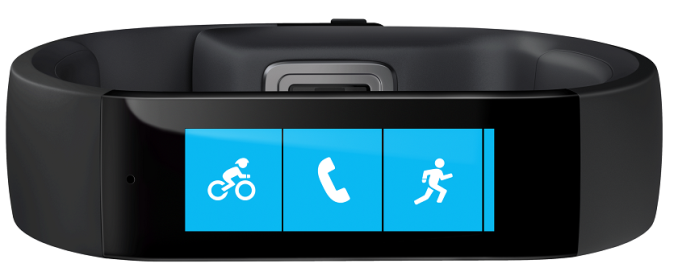

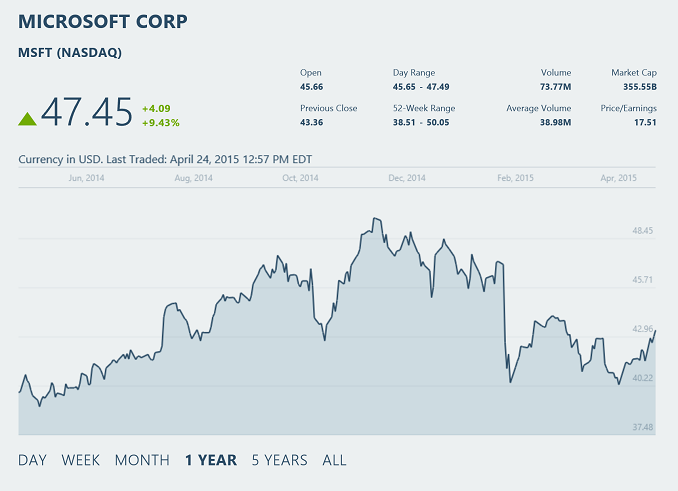


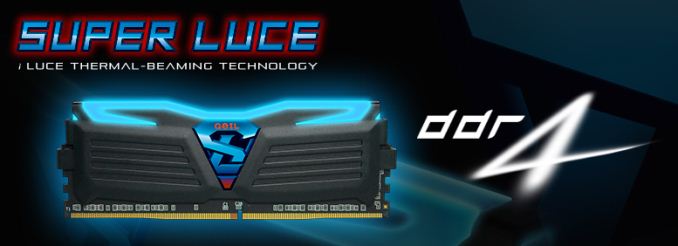


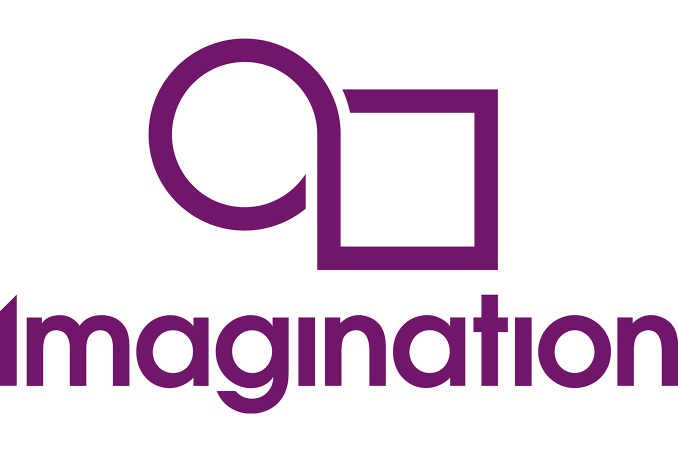
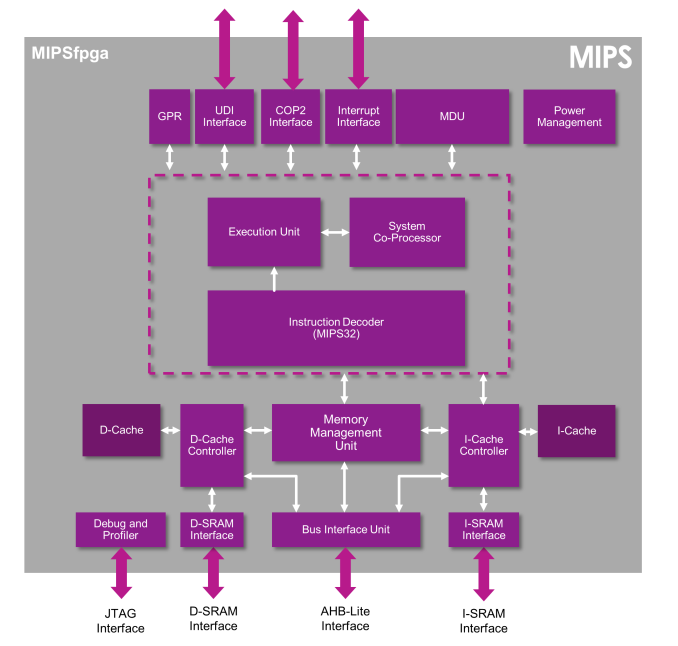


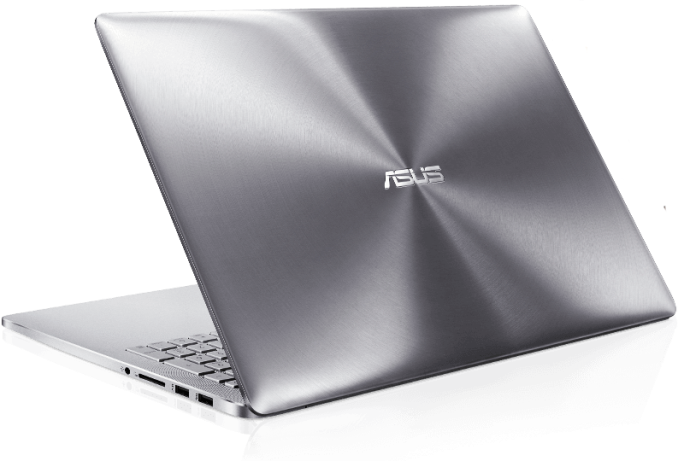
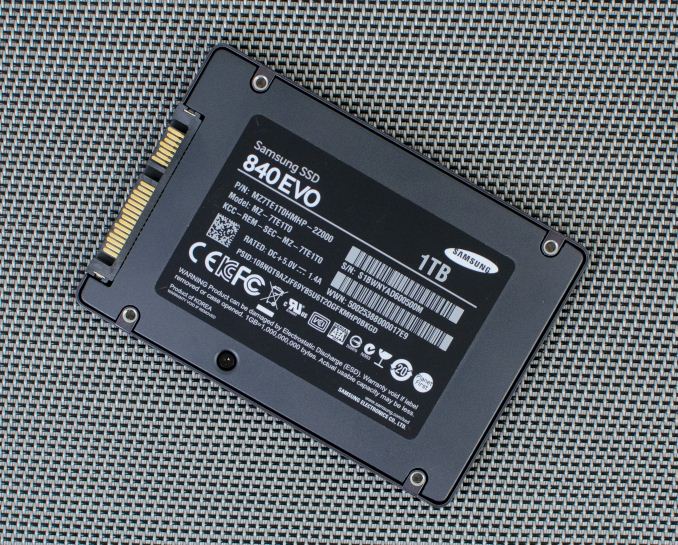
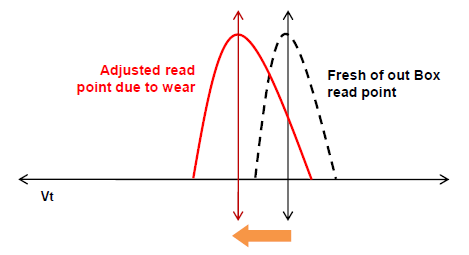
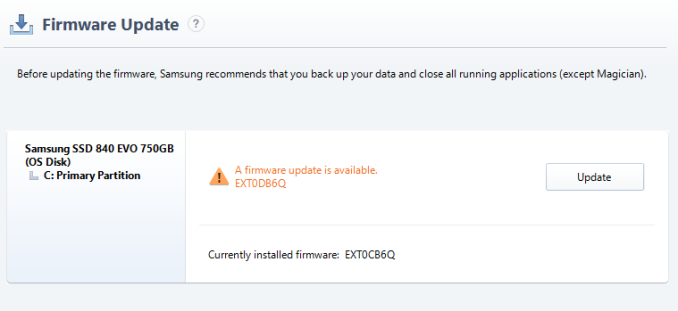
















Bookmarks